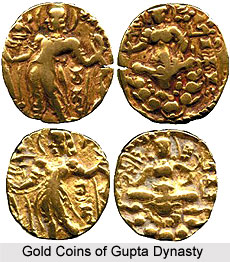 The conquests of Chandragupta II helped the Gupta Empire extend to a vast extent. Chandragupta II maintained the stronghold of the Gupta Empire competently, which was established by his father Samudragupta. Chandragupta II, the immediate successor of Samudragupta, was an important name in the history of ancient India because of his policy of conquests. Since there is no Prasasti or pillar inscription composed during the reign of Chandragupta II, the literary sources appear as the key foundation about his reign.
The conquests of Chandragupta II helped the Gupta Empire extend to a vast extent. Chandragupta II maintained the stronghold of the Gupta Empire competently, which was established by his father Samudragupta. Chandragupta II, the immediate successor of Samudragupta, was an important name in the history of ancient India because of his policy of conquests. Since there is no Prasasti or pillar inscription composed during the reign of Chandragupta II, the literary sources appear as the key foundation about his reign.
Depending on the records of literary sources, historians have opined that Chandragupta led his military campaign westward against the Saka Satrapal power in Gujarat and western Malwa. The Sakas were turbulent power in western India. Moreover their alliance with the Vakatakas of Maharashtra and the Nagas, which had created a formidable opposition, terrified Chandragupta II. So a war between Chandragupta II and the Sakas were inevitable. Moreover to fight out against the allied powers was not so easy. Henceforth, Chandragupta II followed the diplomatic policy in order to isolate the Sakas.
Chandragupta II`s matrimonial policy was directed against his two powerful neighbours-- the Nagas and the Vakatakas. To win the closeness of these two powers was very essential to Chandragupta II, in order to subjugate the Saka satraps. First of all Chandragupta married Kuvera-Naga, the Naga princess and won the friendship of Naga power. The Nagas formed a political force in central India and their alliance with the Guptas consolidated the Gupta authority in that region. Prabhabati Gupta, the daughter of Chandragupta II, by his Naga queen Kuvera Naga, was married to the Vakataka ruler of Maharashtra, Rudrasena II. In this way Chandragupta II consolidated his power in Maharashtra and central India, and at the same time allied with the Naga and Vakataka powers. In this way Chandragupta II secured his position against the revolt of the Saka satraps of Saurashtra. The matrimonial alliances proved politically very useful for Chandragupta II in order to extend his authority over a major portion of western India and to constitute a formidable resistance against the Saka power.
The greatest achievement of Chandragupta II was the conquest of Malwa, Gujarat and Kathiawar from the Western Saka Satraps. The Sakas were always a threat to the authority of the Gupta Empire. Perhaps this was the sole reason which impelled Chandragupta II to wage war against the Sakas of Western India. Chandragupta II had murdered a Saka invader, who had defeated Rama Gupta-- if evidences of the Devi Chandragupta are accepted.
The Gupta Empire now extended from the Bay of Bengal in the east to the Arabian Sea in the west. The annexation of Malwa and Saurashtra by Chandragupta II had given the Guptas free access to parts of western coast, especially the parts of Barygaza. As a result trade relation of the Guptas with the Roman Empire flourished. Therefore the principal impact of victory of Chandragupta II in the Saka war was the material prosperity of the Guptas.
Chandragupta II`s chief credit lies in the consolidation of the Empire. Historians have opined that Chandragupta II had inherited a vast kingdom from his father and during his reign he had consolidated those kingdoms to establish a strong foundation of the Gupta Empire.



















